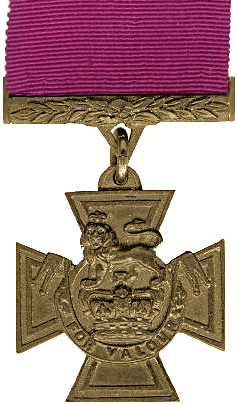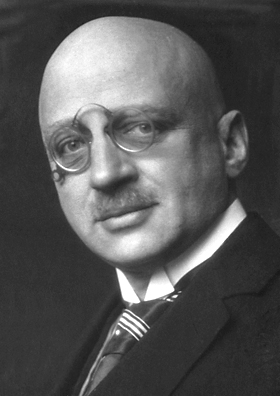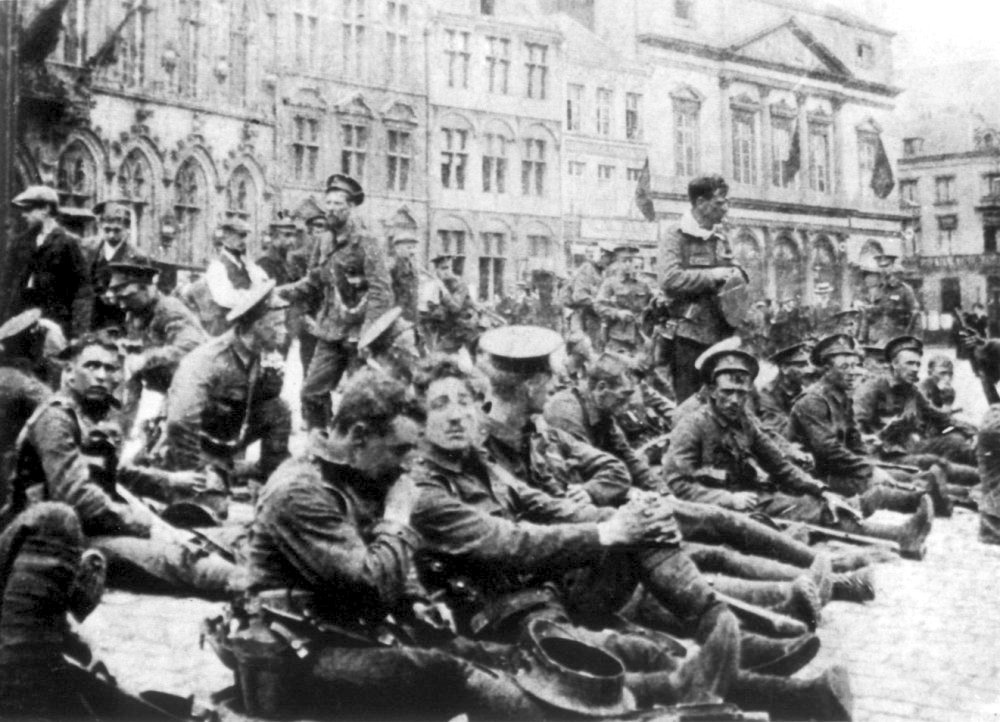|
Cyril Deverell
Field Marshal Sir Cyril John Deverell, (9 November 1874 – 12 May 1947) was a British Army officer who served as Chief of the Imperial General Staff (CIGS), the professional head of the British Army, from 1936 to 1937. Prior to his becoming CIGS, he fought in the Fourth Anglo-Ashanti War and the First World War, during which he commanded at battalion, brigade and division level, and later advised the British government on the importance of maintaining the capability to mount an Expeditionary Force for operations on mainland Europe in the years leading up to the Second World War. Early life Deverell was born the son of Lieutenant John Baines Seddon Deverell and Harriet Strappini Deverell (née Roberts) and educated at Bedford School. Military career Deverell was commissioned into the Prince of Wales's West Yorkshire Regiment on 6 March 1895. He served in the Fourth Anglo-Ashanti War in 1896 and was then promoted to lieutenant on 3 August 1898. He was appointed adjutant of hi ... [...More Info...] [...Related Items...] OR: [Wikipedia] [Google] [Baidu] |
Field Marshal (United Kingdom)
Field marshal (FM) has been the highest rank in the British Army since 1736. A five-star rank with NATO code OF-10, it is equivalent to an Admiral of the Fleet (Royal Navy), Admiral of the Fleet in the Royal Navy or a Marshal of the Royal Air Force in the Royal Air Force (RAF). A Field Marshal's insignia consists of two crossed batons surrounded by yellow leaves below Tudor Crown (heraldry), the Tudor Crown. Like Marshals of the Royal Air Force and Admirals of the Fleet, Field Marshals traditionally remain officers for life, though on half-pay when not in an appointment or retired. The rank has been used sporadically throughout its history, and was vacant during parts of the 18th and 19th centuries (when all former holders of the rank were deceased). After the Second World War, it became standard practice to appoint the Chief of the General Staff (United Kingdom), Chief of the Imperial General Staff (later renamed Chief of the General Staff (United Kingdom), Chief of the Gen ... [...More Info...] [...Related Items...] OR: [Wikipedia] [Google] [Baidu] |
Knight Commander Of The Order Of The British Empire
The Most Excellent Order of the British Empire is a British order of chivalry, rewarding valuable service in a wide range of useful activities. It comprises five classes of awards across both civil and military divisions, the most senior two of which make the recipient either a Orders, decorations, and medals of the United Kingdom#Modern honours, knight if male or a dame (title), dame if female. There is also the related British Empire Medal, whose recipients are affiliated with the order, but are not members of it. The order was established on 4 June 1917 by King George V, who created the order to recognise 'such persons, male or female, as may have rendered or shall hereafter render important services to Our Empire'. Equal recognition was to be given for services rendered in the UK and overseas. Today, the majority of recipients are UK citizens, though a number of Commonwealth realms outside the UK continue to make appointments to the order. Honorary awards may be made to cit ... [...More Info...] [...Related Items...] OR: [Wikipedia] [Google] [Baidu] |
Second Battle Of Ypres
The Second Battle of Ypres was fought from 22 April – 25 May 1915, during the First World War, for control of the tactically-important high ground to the east and the south of the Flanders, Flemish town of Ypres, in western Belgium. The First Battle of Ypres had been fought the previous autumn. The Second Battle of Ypres was the first mass use by Germany of Chemical weapon, poison gas on the Western Front (World War I), Western Front. Background The Germans, German chemist Walther Nernst, who in 1914 was a volunteer driver, proposed to Colonel Max Bauer, the German general staff officer responsible for liaison with scientists, that they could empty the opposing trenches by a surprise attack with tear gas. Observing a field test of this idea, the chemist Fritz Haber instead proposed using heavier-than-air chlorine gas. The German commander Erich von Falkenhayn agreed to try the new weapon but intended to use it in a diversionary attack by the 4th Army (German Empire), 4t ... [...More Info...] [...Related Items...] OR: [Wikipedia] [Google] [Baidu] |
British Expeditionary Force (World War I)
The British Expeditionary Force (BEF) was the formation of British army on the Western Front during World War I. They were sent by Britain to France in 1914 to aid in resisting the German invasion. Originally sent as six divisions the British Army to the Western Front during the First World War. Planning for a British Expeditionary Force began with the 1906–1912 Haldane Reforms of the British Army carried out by the Secretary of State for War Richard Haldane following the Second Boer War (1899–1902). The term ''British Expeditionary Force'' is often used to refer only to the forces present in France prior to the end of the First Battle of Ypres on 22 November 1914. By the end of 1914—after the battles of Mons, Le Cateau, the Aisne and Ypres—the existent BEF had been almost exhausted, although it helped stop the German advance.An alternative endpoint of the BEF was 26 December 1914, when it was divided into the First and Second Armies (a Third, Fourth and ... [...More Info...] [...Related Items...] OR: [Wikipedia] [Google] [Baidu] |
85th Brigade (United Kingdom)
The 85th Brigade was a formation of the British Army. It was originally formed from regular army battalions serving away from home in the British Empire. It was assigned to the 28th Division and served on the Western Front and the Macedonian Front during the First World War. The Brigade was temporarily attached to the 3rd Division between February and April 1915. Formation The infantry battalions did not all serve at once, but all were assigned to the brigade during the war. *2nd Battalion, Buffs (East Kent Regiment) *3rd Battalion, Royal Fusiliers *2nd Battalion, East Surrey Regiment *3rd Battalion, Middlesex Regiment The Middlesex Regiment (Duke of Cambridge's Own) was a line infantry regiment of the British Army in existence from 1881 until 1966. The regiment was formed, as the Duke of Cambridge's Own (Middlesex Regiment), in 1881 as part of the Childers Re ... *1/8th Battalion, Middlesex Regiment *85th Machine Gun Company *85th Trench Mortar Battery *85th SAA Sect ... [...More Info...] [...Related Items...] OR: [Wikipedia] [Google] [Baidu] |
Captain (British Army And Royal Marines)
Captain (Capt) is a junior officer rank of the British Army and Royal Marines and in both services it ranks above Lieutenant (British Army and Royal Marines), lieutenant and below Major (United Kingdom), major with a NATO ranking code of OF-2. The rank is equivalent to a Lieutenant (British Army and Royal Marines), lieutenant in the Royal Navy and to a flight lieutenant in the Royal Air Force. The rank of Captain (Royal Navy), captain in the Royal Navy is considerably more senior (equivalent to the Army/RM rank of colonel) and the two ranks should not be confused. In the 21st-century British Army, captains are often appointed to be second-in-command (2IC) of a Company (military unit), company or equivalent sized unit of up to 120 soldiers. History A rank of second captain existed in the Ordnance at the time of the Battle of Waterloo. From 1 April 1918 to 31 July 1919, the Royal Air Force maintained the junior officer rank of captain. RAF captains had a rank insignia based on ... [...More Info...] [...Related Items...] OR: [Wikipedia] [Google] [Baidu] |
Lieutenant (British Army And Royal Marines)
Lieutenant (; Lt) is a junior officer rank in the British Army and Royal Marines. It ranks above second lieutenant and below captain and has a NATO ranking code of OF-1 and it is the senior subaltern rank. Unlike some armed forces which use first lieutenant, the British rank is simply lieutenant, with no ordinal attached. The rank is equivalent to that of a flying officer in the Royal Air Force (RAF). Although formerly considered senior to a Royal Navy (RN) sub-lieutenant, the British Army and Royal Navy ranks of lieutenant and sub-lieutenant are now considered to be of equivalent status. The Army rank of lieutenant has always been junior to the Navy's rank of lieutenant. Usage In the 21st-century British Army, the rank is ordinarily held for up to three years. A typical appointment for a lieutenant might be the command of a platoon or troop of approximately thirty soldiers. Before 1871, when the whole British Army switched to using the current rank of "lieutenant", th ... [...More Info...] [...Related Items...] OR: [Wikipedia] [Google] [Baidu] |
Officer (armed Forces)
An officer is a person who holds a position of authority as a member of an Military, armed force or Uniformed services, uniformed service. Broadly speaking, "officer" means a commissioned officer, a non-commissioned officer (NCO), or a warrant officer. However, absent contextual qualification, the term typically refers only to a force's ''commissioned officers'', the more senior members who derive their authority from a Commission (document), commission from the head of state. Numbers The proportion of officers varies greatly. Commissioned officers typically make up between an eighth and a fifth of modern armed forces personnel. In 2013, officers were the senior 17% of the British armed forces, and the senior 13.7% of the French armed forces. In 2012, officers made up about 18% of the German armed forces, and about 17.2% of the United States armed forces. Historically armed forces have generally had much lower proportions of officers. During the First World War, fewer than ... [...More Info...] [...Related Items...] OR: [Wikipedia] [Google] [Baidu] |
Bedford School
Bedford School is a 7–18 Single-sex education, boys Public school (United Kingdom), public school in the county town of Bedford in England. Founded in 1552, it is the oldest of four independent schools in Bedford run by the Harpur Trust. Bedford School is one of the oldest boys' schools in the United Kingdom, and was the winner of the Independent Boys School of the Year Award at the Independent Schools of the Year Awards in 2021. Bedford School is composed of the Preparatory school (United Kingdom), Preparatory School (ages 7 to 13) and the Upper School (ages 13 to 18). There are around 1,100 pupils, of whom approximately one half are boarding school, boarders. In 2014, James Hodgson (cricketer, born 1969), James Hodgson succeeded John Moule as headmaster after Moule moved on to Radley College. History Background Although no large scale educational institution had existed in Bedford before the foundation of Bedford School, the Collegiate church, collegiate St Paul's Churc ... [...More Info...] [...Related Items...] OR: [Wikipedia] [Google] [Baidu] |
Second World War
World War II or the Second World War (1 September 1939 – 2 September 1945) was a World war, global conflict between two coalitions: the Allies of World War II, Allies and the Axis powers. World War II by country, Nearly all of the world's countries participated, with many nations mobilising all resources in pursuit of total war. Tanks in World War II, Tanks and Air warfare of World War II, aircraft played major roles, enabling the strategic bombing of cities and delivery of the Atomic bombings of Hiroshima and Nagasaki, first and only nuclear weapons ever used in war. World War II is the List of wars by death toll, deadliest conflict in history, causing World War II casualties, the death of 70 to 85 million people, more than half of whom were civilians. Millions died in genocides, including the Holocaust, and by massacres, starvation, and disease. After the Allied victory, Allied-occupied Germany, Germany, Allied-occupied Austria, Austria, Occupation of Japan, Japan, a ... [...More Info...] [...Related Items...] OR: [Wikipedia] [Google] [Baidu] |
Expeditionary Warfare
Expeditionary warfare is a military invasion of a foreign territory, especially away from established bases. Expeditionary forces were in part the antecedent of the modern concept of rapid deployment forces. Traditionally, expeditionary forces were essentially self-sustaining with an Organic unit, organic Military logistics, logistics capability and with a full array of supporting arms. In the ancient world The earliest examples of expeditionary warfare come from the Sea Peoples, a term used for a confederation of seafaring Raid (military), raiders of the second millennium BC who sailed into the eastern shores of the Mediterranean, caused political unrest, and attempted to enter or control Egyptian territory during the late Nineteenth Dynasty of Egypt, 19th dynasty, and especially during Year 8 of Ramesses III of the Twentieth Dynasty of Egypt, 20th dynasty. The raiding tactics were expanded into the more complex expeditionary warfare operations by Alexander the Great who used C ... [...More Info...] [...Related Items...] OR: [Wikipedia] [Google] [Baidu] |
Government Of The United Kingdom
His Majesty's Government, abbreviated to HM Government or otherwise UK Government, is the central government, central executive authority of the United Kingdom of Great Britain and Northern Ireland.Overview of the UK system of government : Directgov – Government, citizens and rights Archived direct.gov.uk webpage. Retrieved on 29 August 2014. The government is led by the Prime Minister of the United Kingdom, prime minister (Keir Starmer since 5 July 2024) who appoints all the other British Government frontbench, ministers. The country has had a Labour Party (UK), Labour government since 2024 United Kingdom general election, 2024. The ... [...More Info...] [...Related Items...] OR: [Wikipedia] [Google] [Baidu] |








